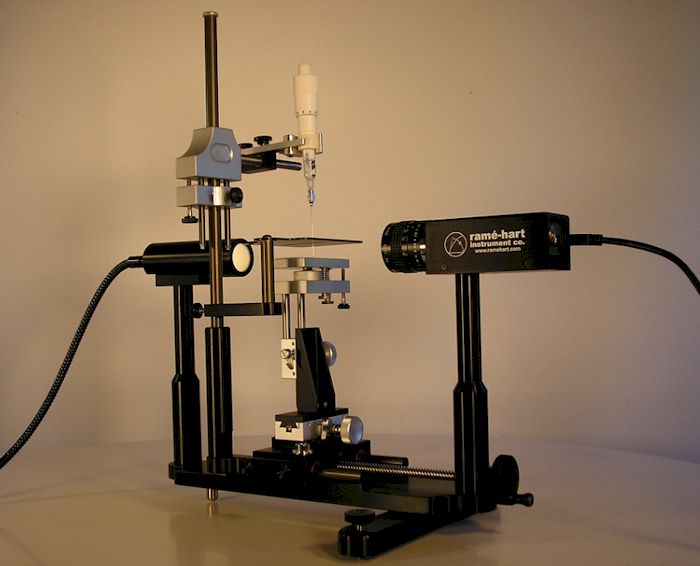|
|
|
|
August
2016 |
|
| The Cheerios Effect and the Surface Tension of Milk | |
|
You know you are a real nerd if you begin your day eating a bowl of Cheerios wondering why the Cheerios floating on the top of the milk have a tendency to clump together. I have to confess that I've wondered about this before. As it turns out, this phenomenon is called the "Cheerios effect".1 It was possibly discovered by a surface scientist at breakfast over a bowl of America's favorite gluten-free oat cereal. It's most obvious when most of the cereal is mostly gone and the remaining little O's find themselves on a pond of milk. You will observe that they tend to migrate to the sides or center of the bowl as well as to each other. This behavior is caused by the surface tension of milk. The molecules at the liquid surface exhibit stronger cohesive bonding than the molecules below the surface. As a result, the surface behaves like a thin film. Since the Cheerios are floating, an upward meniscus forms at the liquid/Cheerio interface. Since the Cheerios are buoyant, they want to move to the highest point - the center of the bowl, to the edge, and to each other.
Cheerios are less dense than milk. Interestingly, paper clips can also float on water (and milk) due to surface tension despite being more dense than the liquid they are floating on. They too are attracted to each other and will snap to one other. As you will see in the diagram above, however, the Cheerios and paper clips repel each other as a result of opposing menisci - one up and one down. It should also be noted that Cheerios do not exhibit complete wetting. A contact angle forms where the milk touches the liquid as a result of strong surface energy and poor wetting. The resulting meniscus is upward due to the buoyancy of the Cheerio while the meniscus on of paper clip curves downward due to gravity and its greater density.
In addition to Cheerios and paper clips, the video above adds thumbtacks to the discussion - a lighter thumbtack head is repelled by a heavier completed thumbtack. The former is floating while the latter would sink but is being held up by the surface tension of the water. The Cheerios effect is useful to understand how self-assembly can work with nanoscopically small parts of uniform shape. You may wonder why ships in the ocean are not attracted to each other like Cheerios are in a breakfast bowl. The answer is that the force of surface tension can only be observed on small objects the size of Cheerios and paper clips. Ships are so large that the forces of surface tension are negligible at that scale. On a related note, while we were studying Cheerios, we became curious about the surface tension of milk. So we took some measurements using a ramé-hart Model 250 with DROPimage Advanced. We found that grade A 2% homogenized and pasteurized cows milk from the grocery store has a surface tension of 48 mN/m. Fatty acids and proteins are the surface-active agents which lower the surface tension to a value lower than that of water. We also found that the surface tension of milk is inversely proportional to the fat content. Thus, we discovered that a tensiometer can replace a lactometer for measuring the creaminess of milk. Bullets
|
|
| Product of the Month: Model 250 | |
|
The rame-hart Model 250 remains a top-selling model due to its versatility. Not only is it a contact angle goniometer and tensiometer, it can also serve as a lactometer as discussed in the article above.
Model 250 includes our DROPimage Advanced software which includes tools for measuring contact angle, surface energy, surface tension, interfacial tension, and an array of dynamic and time-dependant studies. A methods-based experiment design tool allows for powerful experiment development using a friendly interface that is easy to master yet powerful. Dozens of online videos are available to help new users master the array of tasks that can be accomplished with this powerful tool. To learn more about Model 250, visit http://www.ramehart.com/250.htm. Or contact us today for a quotation or answers to any questions. To learn more about our other models, visit the product matrix on this page: http://www.ramehart.com/goniometer.htm. |
|
|
|
Regards,
Carl Clegg |




